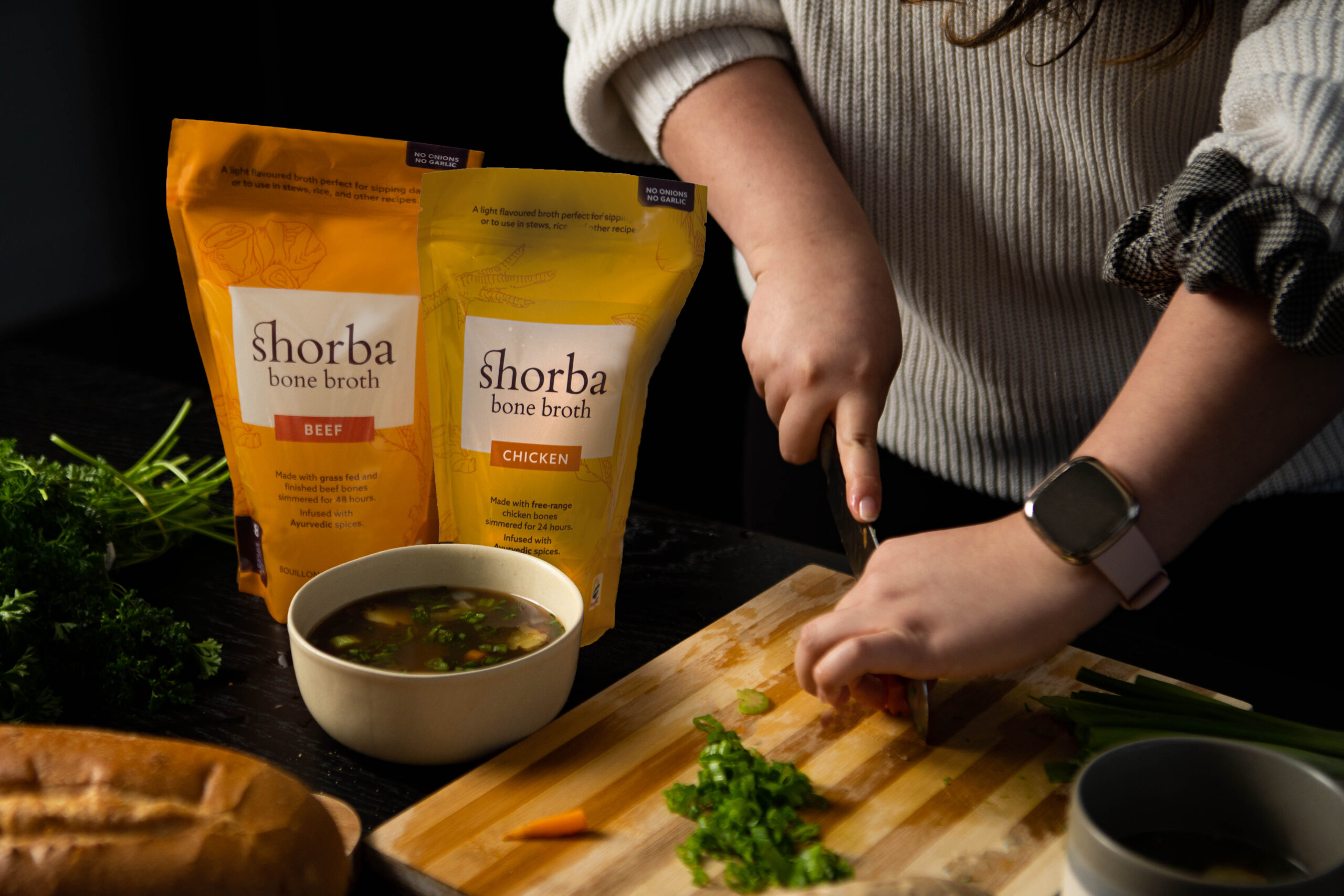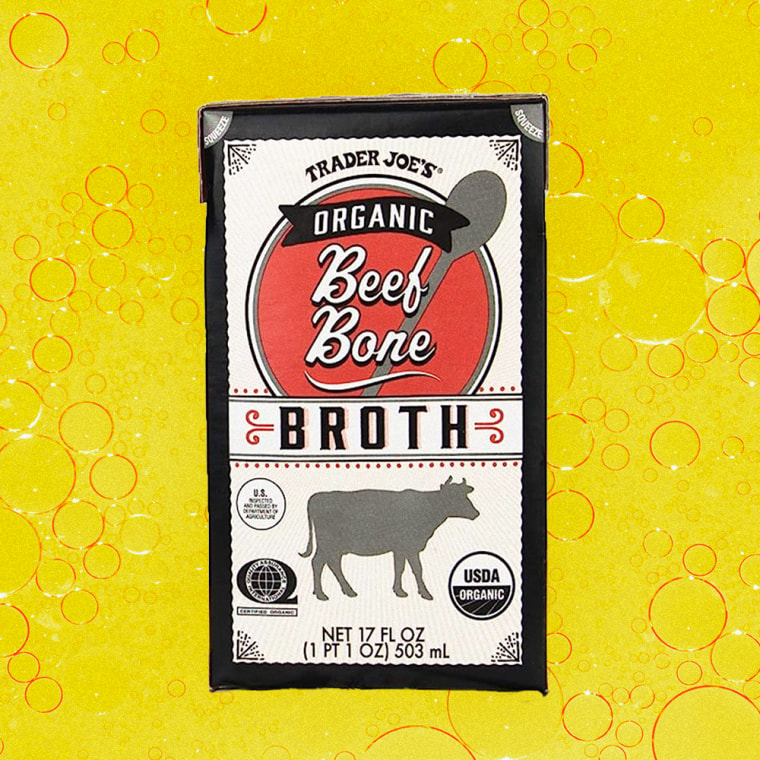How to Make Beef Bone Brew: A Step-by-Step Overview for Delicious Homemade Nutrition
Beef bone brew is a healthy enhancement to any type of kitchen. It offers various health advantages and can boost a variety of recipes. The procedure begins with picking the best bones and components. Recognizing each action is essential for accomplishing the most effective flavor and richness. Nonetheless, lots of home cooks forget necessary techniques that can boost their brew. What are these techniques, and just how can they change a simple brew into a cooking staple?
Understanding the Advantages of Beef Bone Brew
While many individuals take pleasure in the abundant taste of beef bone broth, they may not completely appreciate its various health and wellness advantages. This beneficial potion is recognized for its high collagen content, which sustains joint wellness and promotes skin flexibility. The amino acids discovered in bone broth, such as glycine and proline, play considerable functions in muscular tissue repair and digestive wellness. On top of that, it is rich in minerals like phosphorus, calcium, and magnesium, vital for keeping strong bones and overall health. Bone brew also has anti-inflammatory homes, which can relieve symptoms connected with persistent conditions. Eating it might support gut health by improving the mucosal lining of the gastrointestinal system, advertising better nutrient absorption. In addition, the warmth and convenience of a steaming dish of broth can offer a soothing result, making it a nutritious and delicious option for individuals looking for both cooking enjoyment and wellness advantages.
Picking the Right Bones
The foundation of a nutritious and delicious beef bone broth hinges on the selection of bones. For ideal results, it is vital to choose a selection of bones that supply a rich mix of flavor and nutrients. Marrow bones, which include the fatty, gelatinlike marrow, are particularly prized for their capability to enhance the brew's splendor. Joint bones, such as knuckles and oxtails, are additionally advantageous since they are high in collagen, adding to a smooth appearance. In addition, consisting of some meaningful bones can include deepness to the flavor profile. Sourcing bones from grass-fed or pasture-raised cattle is suggested, as these alternatives tend to provide remarkable top quality and preference. It is also essential to identify the bones are fresh and cost-free from any type of repulsive odors. By carefully choosing the appropriate bones, one can prepare for a delicious and nourishing beef bone brew.
Crucial Ingredients for Flavorful Broth
To produce a tasty beef bone brew, selecting quality beef bones is important as they work as the foundation of the dish - Bone Broth Near Me. Aromatic vegetables and a careful option of herbs and spices even more boost the broth's deepness and complexity. Together, these important components add to a abundant and enjoyable taste profile
High Quality Beef Bones
Quality beef bones act as the structure for a savory and rich broth. The best alternatives include marrow bones, knuckle bones, and oxtails, each adding unique structures and flavors. Marrow bones are valued for their jelly material, which assists create a silky mouthfeel. Knuckle bones, abundant in collagen, enhance the broth's body and nutritional profile. Oxtails use a passionate preference and additional splendor. It is crucial to source bones from grass-fed or pasture-raised cattle, as this boosts the total high quality and flavor of the broth. Freshness is also essential; bones must be used within a few days of acquisition or iced up for later use. Picking top quality beef bones guarantees a nourishing and scrumptious last product.
Aromatic Vegetables Selection
While picking aromatic veggies, one must think about the function they play in boosting the overall taste account of the beef bone broth. Typical choices consist of onions, carrots, and celery, typically described as the "mirepoix." Onions include sweet taste and depth, while carrots add a refined earthiness. Celery supplies a rejuvenating quality that balances the richness of the broth. Garlic, though optional, can introduce a robust flavor, enhancing the mouthwatering notes of the beef. Leeks and shallots are additionally exceptional enhancements, using one-of-a-kind preference dimensions. For a tip of heat and intricacy, some may include ginger or fennel. Choosing a mix of these fragrant vegetables ensures a versatile and flavorful brew, setting the foundation for a nourishing cooking experience.
Flavorful Herbs and Spices
Incorporating savory herbs and flavors is essential for boosting the taste of beef bone brew, as they introduce fragrant complexity and deepness. Common selections consist of bay leaves, which pass on a subtle organic note, and thyme, recognized for its natural flavor. Rosemary, with its pine-like essence, adds a revitalizing touch, while parsley adds illumination and freshness. For a tip of warmth, black peppercorns and Resources garlic are excellent enhancements, improving the broth's total richness. Additionally, pepper flakes or chili powder can present a gentle heat for those that prefer a little seasoning. Choosing a well balanced combination of these components not only enhances flavor yet go to this web-site likewise instills the brew with useful nutrients, making it a tasty and nourishing option for any meal.
Preparing the Bones and Vegetables
To produce a rich and flavorful beef bone brew, the preparation of veggies and bones is crucial. Picking top notch beef bones, such as knuckle, marrow, or oxtail, is essential, as they provide the necessary collagen and nutrients. Roasting the bones in the oven enhances their flavor, providing the brew a deeper, richer taste. It is advisable to roast them at 400 ° F for concerning 30 mins, up until browned.Next, veggies play a pivotal function in building flavor. Typical selections consist of onions, carrots, and celery, referred to as the mirepoix base. These should be roughly sliced to optimize flavor extraction throughout simmering. Garlic and tomatoes can likewise be included for additional depth.Lastly, washing the veggies and bones under cool water aids get rid of any kind of impurities, making certain a clear broth. Effectively preparing bones and vegetables establishes the foundation for a nourishing and delicious beef bone broth.
Food Preparation Approaches: Stovetop vs. Slow Cooker
When it comes to cooking beef bone broth, the choice in between stovetop and slow-moving cooker approaches offers unique benefits. Stovetop food preparation enables quicker results and even more control over the simmering process, while slow-moving cookers supply benefit and a prolonged infusion of flavors. Each approach has its one-of-a-kind benefits, accommodating various preferences and schedules.

Stovetop Food Preparation Advantages
While both stovetop and slow-moving stove approaches have their values, stovetop food preparation provides special benefits that can boost the procedure of making beef bone broth. One considerable advantage is the capacity to control the temperature and simmering time extra precisely, which can bring about suitable extraction of nutrients and flavors from the bones. On top of that, stovetop food preparation enables real-time changes, enabling the chef to keep track of the brew's consistency and preference throughout the procedure. The quicker food preparation time contrasted to slow down stoves can also be helpful home for those requiring brew in a much shorter timeframe. Additionally, the stovetop technique urges a hands-on approach, fostering a deeper connection to the cooking procedure and possibly leading to an extra savory end product.
Slow Stove Advantages
Using a slow-moving stove for making beef bone broth provides a number of distinctive benefits that interest many home cooks. One primary benefit is the ease of set-it-and-forget-it cooking. As soon as the components are integrated, the sluggish stove can run unattended for hours, enabling a busy schedule without constant monitoring. Additionally, sluggish cookers keep a regular reduced temperature level, which extracts tastes and nutrients efficiently with time without the risk of boiling, bring about a richer brew. The energy efficiency of slow cookers also stands apart, as they make use of much less electrical power contrasted to stovetops (Bone Broth Near Me). Sluggish cookers typically have programmable setups, enabling precise control over cooking times, which improves the overall simplicity of broth prep work.

Straining and Saving Your Brew
Keeping and straining beef bone brew is a vital action that ensures a clear, savory last item. As soon as the broth has simmered for the advised time, it ought to be carefully put via a fine mesh filter or cheesecloth into a large dish or pot. This process removes any solids, such as meat, vegetables, and bones, ensuring a smooth consistency. To catch all taste, pushing the solids carefully with a spoon can be beneficial.After straining, the brew must cool to space temperature before being kept. It is best to utilize airtight containers, such as glass jars or freezer-safe bags, to avoid fridge freezer maintain and melt freshness. Identifying the containers with the day is likewise advisable. The brew can be cooled for approximately a week or iced up for several months, making it a hassle-free enhancement to future meals. Correct storage assurances that the nutritional benefits and tastes remain undamaged.
Imaginative Ways to Utilize Beef Bone Broth
Beef bone broth offers a versatile structure for a selection of meals, improving both taste and nutrition. Home cooks can include it into stews and soups, offering a rich base that grows the general preference. It can also be utilized as a cooking fluid for grains, such as rice or quinoa, infusing them with included nutrients and flavor.Additionally, beef bone brew offers as an outstanding foundation for sauces and sauces, offering complexity and splendor to dishes. For those seeking a healthy drink, drinking warm brew can be nourishing and comforting. It can also be made use of in smoothie mixes for a protein increase, though this might call for some imaginative flavor balancing.Ultimately, beef bone brew not just elevates day-to-day recipes but additionally adds to a wholesome diet plan, making it a staple active ingredient for health-conscious people and culinary lovers alike.
Frequently Asked Concerns
For How Long Can I Shop Beef Bone Broth in the Refrigerator?
The concern of storage space period for beef bone brew in the refrigerator is important. Typically, it can be securely kept for regarding 3 to 5 days, guaranteeing quality and high quality before usage or freezing for longer conservation.
Can I Freeze Beef Bone Broth, and for Exactly how Long?
Beef bone brew can be frozen efficiently, allowing for expanded storage. When appropriately secured in closed containers, it can last as much as 6 months in the freezer, maintaining its taste and nutritional advantages for later usage.
Is It Safe to Use Bones From a Grocery Store Store?
The safety of utilizing food store bones depends upon their source and handling. If correctly sourced and saved, these bones can be secure for consumption, providing essential nutrients when ready correctly for broth.
Can I Make Beef Bone Brew in an Immediate Pot?
The Instantaneous Pot is certainly appropriate for making beef bone brew - Beef Bone Broth. Its stress food preparation feature significantly lowers cooking time while still extracting rich tastes and nutrients, making it a hassle-free option for hectic home chefs

What Nutritional Distinctions Exist In Between Beef and Chicken Bone Brew?
The dietary distinctions in between beef and poultry bone brew mostly lie in their collagen material, amino acids, and mineral profiles. Beef brew typically consists of even more collagen and minerals, while poultry broth is often lighter and much easier to digest. The foundation of a healthy and savory beef bone brew exists in the option of bones. To develop a savory beef bone brew, selecting high quality beef bones is crucial as they serve as the foundation of the dish. The finest options include marrow bones, knuckle bones, and oxtails, each contributing unique textures and tastes. While picking fragrant vegetables, one should take into consideration the duty they play in improving the general taste profile of the beef bone brew. To develop a rich and delicious beef bone brew, the prep work of vegetables and bones is necessary.